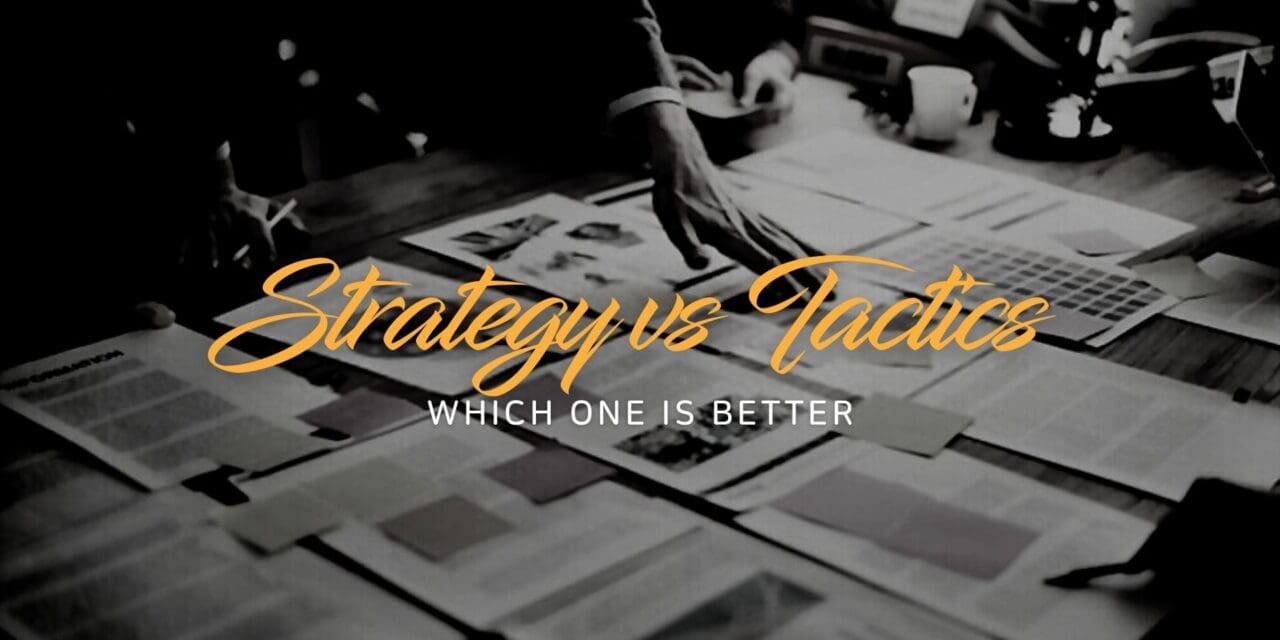Strategy and tactics. They’re two highly common terms that pop up in business, competitive sport, and even warfare.
But in all these arenas, there’s a distinct difference between the two. So let’s look at strategy versus tactics in business, whether one is better than the other, and how they come into play.
Strategy and tactics – a definition
Strategy: A plan of action designed to achieve a long-term or overall aim (Oxford Languages)
Tactics: An action or strategy carefully planned to achieve a specific end (Oxford Languages)
The reality is, every business is likely to apply both strategy and tactics, just as both might be applied in a game of chess.
Using that example, a strategy would involve a series of moves required to win the game, while tactics are the incremental actions you take in order to achieve that objective.
And these tactics might need to alter in response to the moves of a chess opponent and how the game is played.
In other words, strategy involves an overarching goal and the big-picture plan you have to get there.
Tactics, on the other hand, are the small steps required along the way.
So which one is better? Well, in short, both are required in business and here’s how they’re used.
A business strategy
Strategy is essential to the success of any business. It’s the big-picture plan which includes a roadmap of what needs to be achieved and what resources you require to get you where you want to go.
That destination might be business startup, it could be growth, or perhaps it’s diversification in response to a changing market.
Whatever the aim is, the strategy is the way you intend to get there, or the path you plan to follow.
In a nutshell, it says this is where we want to go and how we intend to get there, but along the way tactics will be required.
Business tactics
Tactics on the other hand are more responsive. They are the small actions you take to achieve the big-picture destination, and they can easily be altered should the playing field shift.
Tactics are akin to incremental steps that are part of the lengthier journey that is the business strategy.
They are smaller, easier to accomplish, can be altered if needed but add up to get you where you want to go.
Strategy and tactics go hand in hand
Neither strategy nor tactics work independently of each other. In business they must be aligned in order to achieve the overarching goal.
For example, if your strategy is business growth through diversification, your tactics will look at who’s responsible for product development, the resources required, the budget needed, the testing that has to be undertaken prior to product launch, then the marketing plan required to launch that product.
Along the way, each of these steps will become someone’s responsibility, and there will be measurements such as KPIs to determine whether each action was successful.
The tactics required to achieve these steps might change as the process gets underway. Budgets might need to be realigned, more staff input might be required, an alternative product might prove better etc.
But the overarching strategy to create business growth remains the same.
Why you need both
If you start using business tactics without strategy, your business can quickly lose direction, embracing every new fad that comes along while exhausting your staff in the process.
Every business needs a big picture strategic plan, otherwise you risk becoming irrelevant.
That said, you cannot have a strategy without employing tactics to get there.
These incremental steps are the small actions that are needed to achieve the ultimate destination.
They are the tangible activities that can be measured, managed and allocated to staff in the knowledge that every tactic that is successfully executed gets you a step closer to strategic success.
Talk Strategy with Clive
With more than 30 years’ experience in mentoring small to medium-sized businesses around Australia. Clive works with company owners and their teams to grow their business and achieve goals through strategic coaching.









